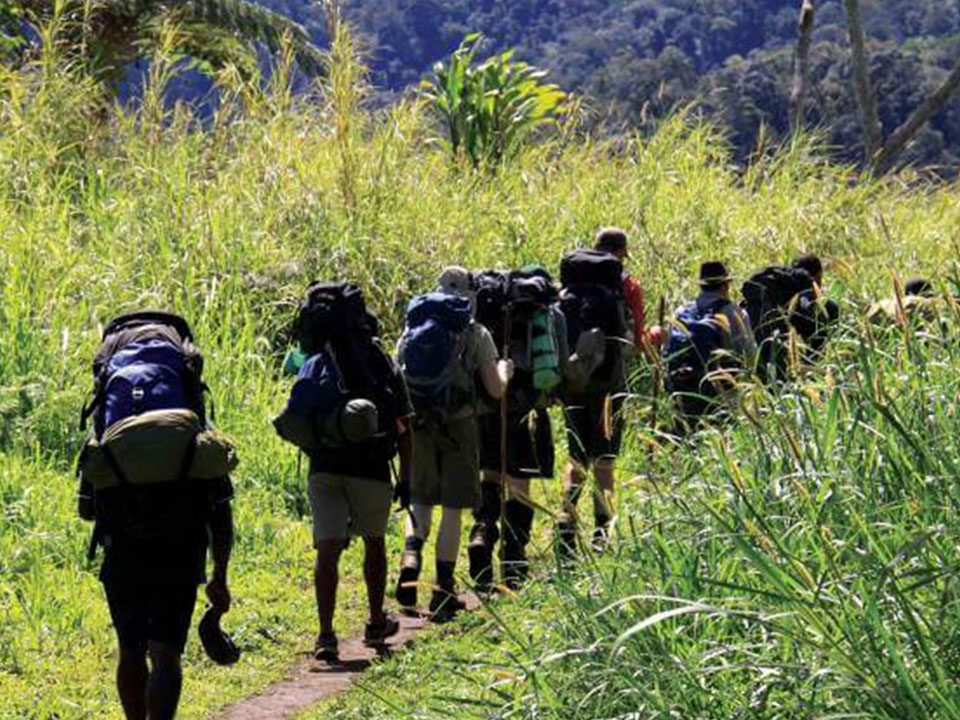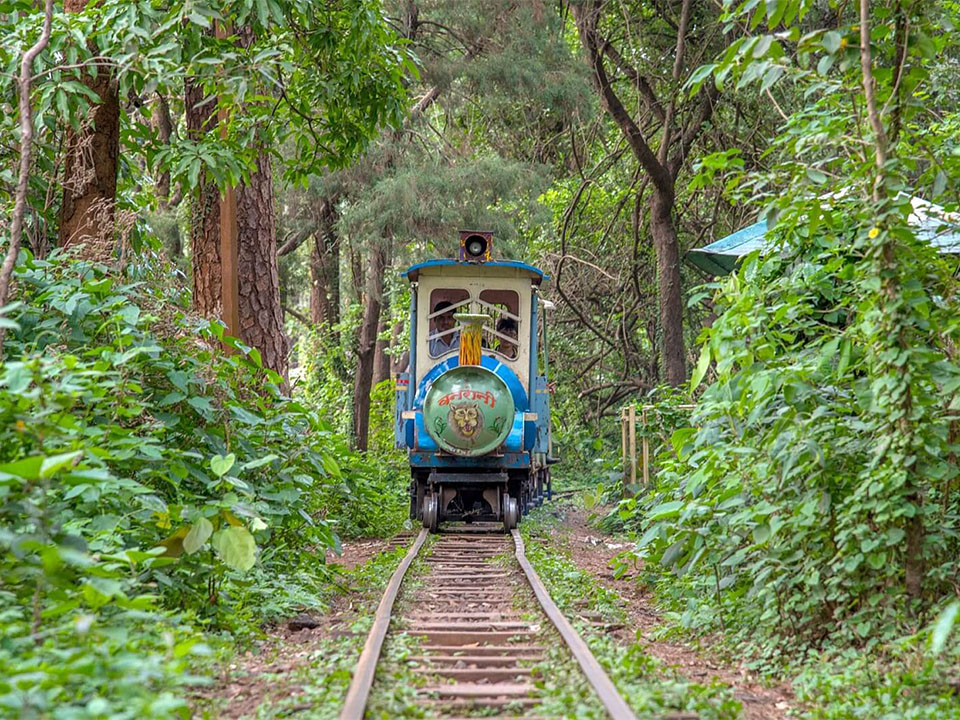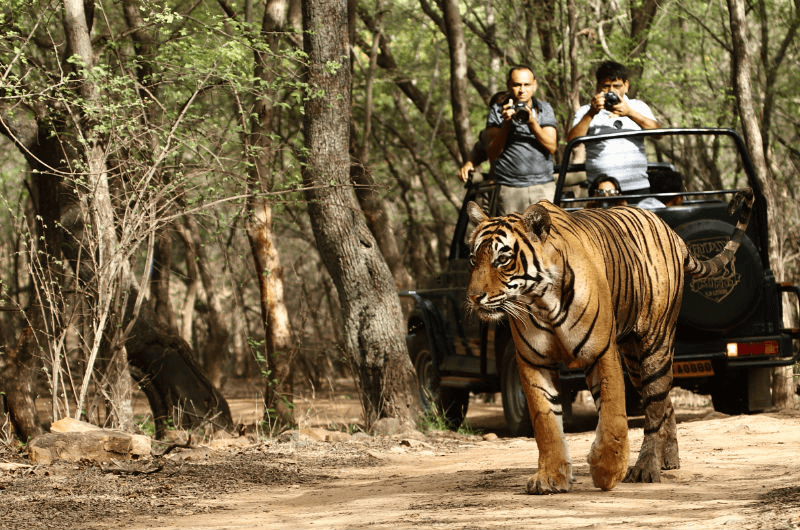Being a pioneer comes naturally to the beautiful landscape of Melghat which is nestled in the Satpuda hill ranges of Forsyth's and Dunbar's Central India. When a tiger census was conducted in 1972 Indian Government was alarmed to find only 1800 tigers as against 20000 to 40000 estimated at the turn of the 20th century. This led the Government of India under the then Prime Minister Smt. Indira Gandhi to set up Project Tiger in 1973 on the matter of tiger conservation. Nine tiger reserves were established in the first phase in the country during the year 1973-74. Melghat Tiger Reserve was one of these nine tiger reserves and came into being on 22nd February 1974. Initially it was over an area of 1571.74 sq. km. This was the first tiger reserve to be declared in the state of Maharashtra, which subsequently got expanded to 2029.04 sq. km. The mystic landscape of Melghat has vast tracts of inviolate natural forests consisting of unique and representative ecosystems with rich bio-diversity and varied habitats offered by deep valleys (locally known as 'khoras') and high hills (locally known as 'ballas'), daunted with rivers and 'nallahs having water all the year round in the 'dohs”.
Melghat was declared a tiger reserve and was among the first nine tiger reserves notified in 1973-74 under the Project Tiger. In 1985 Melghat Wildlife Sanctuary was created. Gugamal National Park, which forms the core area of the reserve, has an area of 361.28 km2. carved out in 1987.
There are passes in Melghat that invaders from the north traversed to reach Berar, where the Imad Shahi dynasty had been founded in 1484. The historic forts, Narnala and Gawilgarh, guarded the main east-west ridge. In 1803, in the Second Maratha War, Colonel Arthur Wellesley, who later became the Duke of Wellington, captured the Gawilgarh fort from the Marathas.
Narnala, also known as "Shahnur Fort", is a hill fortress in Maharashtra, India, named after the Rajput Ruler Narnala Singh. The fort was first established in 10 century A.D. by Gond Kings. In the 15th Century it was occupied and rebuilt by the Mughals, becoming one of Berar Subah's thirteen sarkar. It consists of three small forts: Zafarabad (or Jafarabad) fort on the east, Narnala in the center and Teliagarh to the west. The lake within the center of the complex is said to possess healing properties and according to legend contained the philosopher's stone, though no stone was found when the lake dried up in the drought and Indian famine of 1899-1900.
Occupied since at least the Khalji dynasty, the fort is well known for the Muslim saint Hazrat Burhanuddin "Bagh Sawar Wali", and it is said that many white tigers were seen with him at that time. Adli Beg or Atalu Beg carved many Arabic inscriptions into the fort and the Kadak Bijli cannon. It is also the birthplace of the Mughal Aurangzeb's great grandson.Location
The fort is located in the Akot Taluka of Akola district, Berar at coordinates of 20.703 N and 76.997 E. The closest city is Akot, which is 18 km away. It is at the southernmost tip of the Satpura Hills at an elevation of 912 meters above sea level. Currently the fort falls within the Melghat Tiger Reserve.
After his expedition across the Gangetic plains in 1017, of Al-Biruni to compose his Tarikh Al-Hind in order to understand the Indians and their beliefs
The Narnala fort / Shahnur fort built by the Sultan Mahmoud Gazhnavi because he is a follower of Bagh-sawar wali Hazrat Burhanuddin the maintain after Imad shahi dynasty and after this Akbar invaded Berar maintained by Mughals. Mughals recreated the Narnala Fort with Mughal architecture and built mosque at the fort.By his killedar, Shah Dulha Rehman Ghazi of Ellichpur (now Achalpur) was maternal cousin of sultan Mahmud Ghaznavi and maternal grandson of sultan Nasiruddin Alaptagueen he was marched for battle against rajah Eil.Through the route of Shahnur fort he was stay here threefold night and pray.
Ahmad Shah Bahamani got the fort repaired around 1425 when he constructed Gavilgad with a view to obstructing the invaders from the north frontier of his kingdom. Nearly all the present buildings seem to be of Islamic origin. The fort passed on to Fathullah Imad-ul-Mulkwhen he became an independent ruler by 1490 as he was the Subedar of Berar under the Bahamanis. Gavilgad also passed on to him. Burhan Imad Shah was imprisoned on this fort by one of his Amirs Tufail khan who crowned himself. In the battle that was fought between Tufail khan and Murtaza Nizam Shah in 1572 Tufail khan was defeated and had to flee and took asylum with Muhammad Shah of Khandesh. On being threatened by Murtaza Nizam Shah of dire consequences if the asylum was continued, Muhammad Shah of Khandesh, refused to give refuge to Tufail khan who was forced to return to Narnala fort and stay there. The fort was invested by the army of Murtaza. The fort surrendered and Tufail khan and also Burhan Imad Shah were imprisoned along with 40 others. They were confined in the fort of Lohagad where they died while in captivity. Some historians say that all of them were poisoned under the orders of Murtaza Nizam Shah. After the battle that was fought between the armies of the Ahmadnagar kingdom and the Emperor Akbar on 26 January 1597 in which the armies of the Adilshahi Emperor who along with the Kutub Shah of Golconda was an ally of Nizamshah emerged successful. The fort can now ho ascended by a motorable road. About halfway up it crosses first one and then another piece of level ground, each thickly sprinkled with Islamic tombs.
The path passes two other strong gateways and one slighter one before entering the heart of the fort, and climbs meanwhile to the uppermost glials. Between the last two gateways are the domed tombs of Bagh Savar Wali and Gaz Badshah. Wali, the former not only rode a tiger in his life but the old Gazetteer slates "even now a tiny white tiger may be seen at night going to and from his tomb." Passing the last gateway one comes almost at once before the Ambar Bangala, the kacheri of former days
The exact date of construction is not known. The first fortifications, according to local legend, were made by Naryendrapun, a descendant of the Pandavas and at the time Emperor of Hastinapur (Delhi). It likely predates 1400 CE as Firishta -the Persian historian- records that Ninth Badshaha Shahbudeen Ahmad Shah I Wali (1422 CE to 1436 CE) during construction of the Gawilgarh fort, made repairs to Narnala fort when he camped at Achalpur (Elichpur) from 1425 to 1428. This would mean that the Narnala fort was constructed before Bahmani rule.
n 1437, when Nashir Khan the subedar of Khandesh invaded Berar, the governor of the province (also called Khan-i-Jahan), remained loyal to his master, Ala-ud-din Ahmad Shah II (son of Ahmad Shah I Wali) and retreated to Narnala. He was besieged by disaffected nobles and Nashir Khan, but managed to break through the besieging force with help of Khalaf Hasan Basri who was sent by Ala-ud-din Ahmed Shah II. Nasir Khan was defeated.
In 1487 CE Narnala along with Gawilgarh came under the control of Fathullah Imad-ul-Mulk, the founder of Imad shahi dynasty at Ellichpur (or Achalpur).
In 1572 Burhan Imad Shah (also of the Imad Shahi dynasty) was confined in Narnala by his minister Tufail Khan. This gave Murtaza Nizam Shah of Ahmadnagar a pretext to lay siege to the fortress. He captured both king and minister, subsequently putting them to death. Thus the fort passed into the hands of the Ahmednagar kings. In 1597-98, the fort was captured by Akbar's officers, Saiyid Yusuf Khan Mashhad and Shaikh Abul Fazl, and renamed Shanur. from the officer who held it for the Sultan of Ahmadnagar. During Akbar’s rule, Narnala was one of the Sarkars of Berar Subah (see Berar Subah).
Sardar Beg Mirza and Qader Beg Mirza, hereditary descendants of the Mughal dynasty in the 18th century, stayed near Argaon because Shah Beg Subedar of Berar held the fort.
Narnala was captured by Parsoji Bhosale in 1701 CE and remained with the Marathas till it was taken over by the British in 1803 CE.
he fort covers an area of 362 acres (1.46 km2). It has 360 watchtowers, six large and twenty one small gates. The large gates are called the Delhi darwaza, the Sirpur darwaza, the Akot darwaza, and the Shahnur darwaza. The innermost of the three gate-ways is the Shahnur or Mahakali gate. It is built of white sandstone and is highly ornate. It is decorated with conventional lotus flowers, a rich cornice, and Arabic inscriptions, and flanked by projecting balconies with panels of stone lattice-work displaying considerable variety of design. It is considered an example of Sultanate style of architecture. An inscription records the fact that the gate was built in the reign of Shahab-ud-din Mahmud Shah (Bahmani) by Fathullah Imad-ul-Mulk in 1486. A short verse from the Quran is also inscribed. The fort still display " Ashtakamal" eight petals Lotus which was the symbol of Narnal Singh's dynasty. These lotuses are visible on the mosques and many other places. Hence it is evident that Islamic rulers made changes in Narnal Singh's original architectural construction and converted the place in Moghul form. It was impossible for any ruler to rebuild entire fort considering the geographical location of the fort.
It has an aqueduct and drains to catch rainwater. Along with 19 tanks, four of which are full throughout the year, this ensured a plentiful water supply to the fort residents.

Please follow the rules and regulation as per the wildlife protection act 1972 to avoid impose punishment for violating the same. The schedules give absolute protection to certain species and these cannot be infringed on any account.Offences related to trade and commerce in trophies, animals articles etc. Derived from certain animals attracts a term of imprisonment up to three years and/or a fine up to Rs. 25,000/-.

Melghat Tiger Reserve offers various activities like day safari, Full day Safari, Night Machaan Stay, Kayaking, Elephant ride, Trekking, Adventure activities like zorbi ball, Burma bridge, River crossing, Parallel bridge and many more. These various activities are available at tourist destination like Aamzari, Semadoh, Kolkas, Harisal, Shahanur. The tribal dance show can be arranged on request. Home stay facility is also provided to experience the culture & day to day life style of tribal.

Melghat tiger reserve has many places to explore. The popular destination for the tourism point of view are Chikhaldara, Aamzari, Semadoh, Kolkas, Harisal & Shahanur. Please find the details in 'How to reach" to these various destination in Melghat Tiger Reserve

Melghat keeps organizing various event for all. The list of popular events -Be a Naturalist, Mel-Con, Ephil Dodo, Bird Race, Monsoon Trek, Logo banao Logo, Photography competitions etc. To get updates about these events please follow our page Melghat Tiger Reserve on facebook.